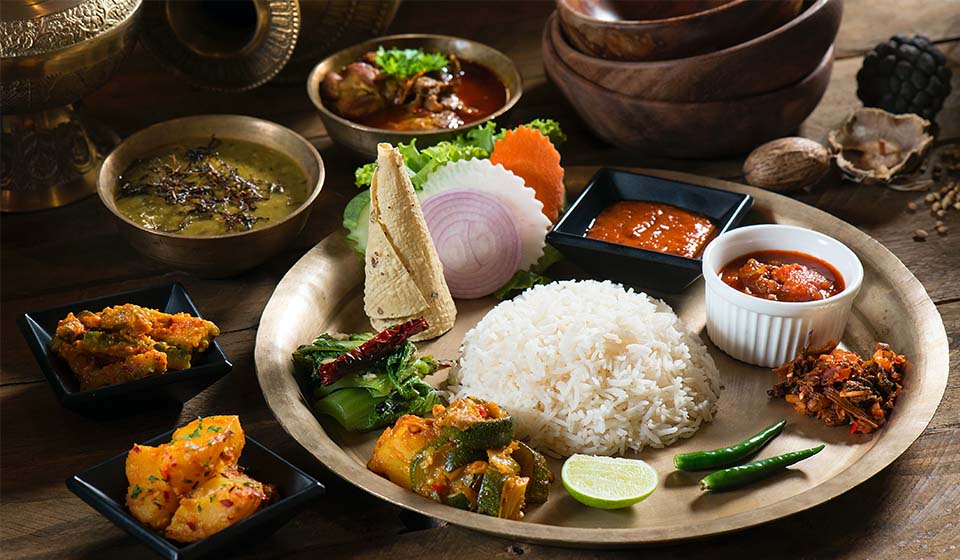
OR
Opinion
Festive Food for Thought: Tackling Food Waste in Nepal
Published On: October 29, 2023 12:00 PM NPT By: Aastha Pokharel

Festivals today are largely commercialized, making the public buy certain foods and products.
Food waste during festivals deepens the divide between the rich and the poor by highlighting disparities in resource access. While some indulge in lavish feasts, others struggle with hunger and scarcity. Many celebrate these festivals with an empty stomach.
Nepal's festive season is a time of joy, togetherness, and delicious food, especially during festivals like Dashain and Tihar. Dashain and Tihar, two of the most prominent festivals in the country, bring communities together. Dashain, known as the festival of victory over evil, and Tihar, the festival of lights, is celebrated enthusiastically throughout Nepal. These festivals are marked by family reunions, new clothes, elders' blessings, and the preparation of mouthwatering dishes. While the festive season aims to symbolize abundance and generosity, it often results in the wastage of food. The large meals during Dashain and Tihar often go beyond what's really needed, leaving a significant amount of uneaten food. There are several reasons for food waste during these festivals. These festivals come with longstanding culinary traditions and expectations. During Dashain and Tihar various ranges of food from delicious selrotis, and aachars that tingle the taste buds to meat items are prepared that hold a cultural practice. People feel obliged to prepare a variety of foods to uphold these rooted cooking traditions. Festivals today are largely commercialized, making the public buy certain foods and products. This has led to overconsumption and waste. Many households in Nepal lack proper storage facilities so the uneaten food mostly goes to waste. Social pressure plays a significant role too. The desire to impress guests often prompts us to over-cater. Nepali culture places a high value on generosity and hospitality. During festivals, we want to ensure that guests have enough food and feel welcome. There is a fear of food scarcity and we over-prepare out of concern that they might not have enough to eat, leading to an unnecessary surplus of food. This issue is particularly disheartening in a nation where 15.1% of the people still live below the poverty line, lacking access to basic necessities. The United Nations report shows that individual Nepali wastes about 79 kg of food in a year and most of the food is wasted during the festive season. This rate is higher than that of India and China. During festivals, having too much food can lead to overeating and unhealthy dietary habits, which may result in health problems like obesity and related diseases. At the same time when lots of food is being thrown away, some people do not have enough to eat. There are many hungry animals roaming on the streets. It's ironic that these festivals intend to show big-heartedness but often end up with wasted food that could have helped those who are hungry.
Impacts of food waste
Food waste during festivals deepens the divide between the rich and the poor by highlighting disparities in resource access. While some indulge in lavish feasts, others struggle with hunger and scarcity. Many celebrate these festivals with an empty stomach. This contrast serves as a reminder of the unequal distribution of wealth and resources within communities. People's spending on food, supplies, and preparations typically increases during festivals. When this expenditure results in wasted food, it places a financial burden on households. Furthermore, managing and disposing of this waste seeks additional costs for local authorities. Food waste has severe environmental repercussions too. When edible food is thrown away, it ends up in landfills where it decomposes and produces methane gas – a potent greenhouse gas contributing to climate change. Food production involves the use of resources like water, land, and energy. When this food is discarded, it is a significant waste of these valuable resources. Additionally, the disposal of uneaten food can attract scavengers, which disrupt local ecosystems.
A Path Towards Change Conscious efforts are required to tackle the issue of food waste during festivals in Nepal. One key solution is estimating the required quantities and encouraging guests to take only what they can consume. Estimating the number of guests and their dietary preferences reduces the likelihood of excess food left uneaten. Promoting awareness about the value of sharing surplus festival food is vital. Instead of throwing away excess food, families should be encouraged to donate it to local charities, shelters, or food banks. It can help address both hunger and food waste issues. We can practice mindful cooking, ensuring that all parts of ingredients are utilized and turning leftovers into new dishes. We should invest in proper food storage facilities and educate people to store leftover food to avoid spoilage. It is necessary to raise awareness about the issue of food waste to promote behavioral change. Governments, NGOs, and community organizations can organize campaigns highlighting its negative impact on the environment, society, and economy. Dashain and Tihar are cherished festivals that represent the heart and soul of Nepal's culture. Addressing food waste during these festivals takes on added importance due to its impact on the environment, society, and economy. It's crucial that we celebrate while thinking about food waste. As we move forward, let the spirit of our festivals shine not just in the grand feasts but in embracing love, compassion, unity, and sustainability during these occasions.
You May Like This

Festivals help reinvigorate sense of unity: Chief Minister Rai
Province-1 Chief Minister Rajendra Kumar Rai has extended best wishes to all Nepali people on the occasion of Kiranti people's... Read More...

Cooking is cool
How people think and behave is largely determined by what they eat and how they eat. We can simply surmise... Read More...

Security beefed up along border for festivals
BIRGUNJ, Oct 1: Security has been tightened along the border with India in view of upcoming Dashain, Tihar and Chhath... Read More...










Just In
- Heavy rainfall likely in Bagmati and Sudurpaschim provinces
- Bangladesh protest leaders taken from hospital by police
- Challenges Confronting the New Coalition
- NRB introduces cautiously flexible measures to address ongoing slowdown in various economic sectors
- Forced Covid-19 cremations: is it too late for redemption?
- NRB to provide collateral-free loans to foreign employment seekers
- NEB to publish Grade 12 results next week
- Body handover begins; Relatives remain dissatisfied with insurance, compensation amount








Leave A Comment